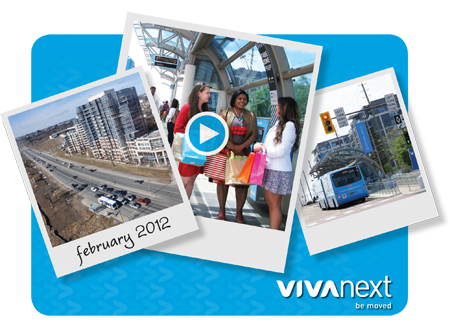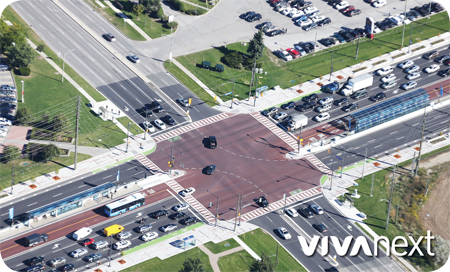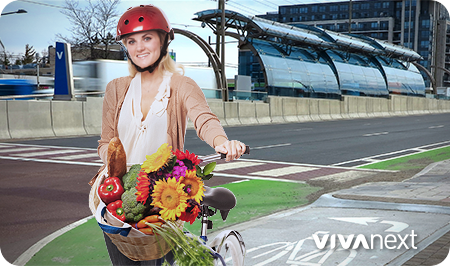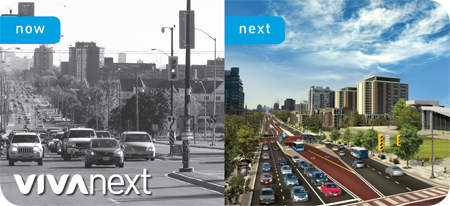With crews working on the finishing touches on the eastern half of the Highway 7 rapidway, we’re getting closer to the completion of this rapid transit corridor. As much as we’re looking forward to celebrating this milestone, it’s only one [very exciting] step in a long path that started years ago.
There’s a lot of media coverage these days, of transit needs all across the Greater Toronto and Hamilton Area [GTHA], and we’re proud that York Region is actively working to bring rapid transit to our region. In 2002, the Region produced the York Region Transportation Master Plan and the follow-up Rapid Transit Plan, committing the Region to a blueprint of multiple transportation initiatives to be built over the next 30 years.
With approval to the Rapid Transit Plan, we got to work and in 2005 the Viva team launched “QuickStart,” the first phase of Viva service. Viva offered enhanced features that made transit more comfortable and convenient, and put the customer first. With ridership levels increasing steadily, Viva changed the way people in York Region thought of transit and there was appreciation for the higher level of services with enhanced features and frequencies.
But while our new Viva service was a major success and an important first step in encouraging people to try transit, designing the vivaNext rapid transit system was the Region’s long-term vision. Ontario municipalities are mandated to plan sustainable, more intensive land-use as part of the provincial government policy, and rapid transit is a key component in achieving that goal. Anticipating this, the Transportation Master Plan directed that future growth in York Region would be concentrated in new downtowns in Markham, Newmarket, Richmond Hill and Vaughan. By building more intensively in these areas, there would be less pressure for growth in existing neighbourhoods.
These urban centres would be connected by transportation “corridors,” making it easier for people to get around the region and providing transportation options, such as regular transit service. The vivaNext rapidways are being built along the corridors, providing these connections across York Region and into the rest of the GTHA.
Much of the new development being built around vivastations is compact and mixed-use, providing housing, employment, retail, dining, services and recreation, all within walking distance of transit. Developments include more welcoming public spaces, attractive landscaping, and other amenities that contribute to the centres becoming more dynamic destinations.
The plan is well and truly underway, and rapidways are being built on Highway 7 in both the east and west, as well as in Newmarket. The Toronto-York Spadina Subway Extension is under construction, and the designs for rapidways on Yonge Street are being finalized. Great new developments are popping up all over the new urban centres across the Region.
So when the next segment of rapidway on Highway 7 East starts service this summer, we can all celebrate the implementation of the first phase of our transportation and growth management blueprint, not to mention the end of construction! Check out the new video highlighting the Highway 7 East segment.










